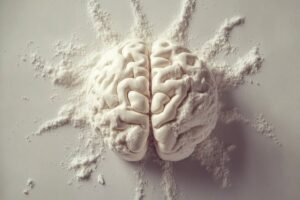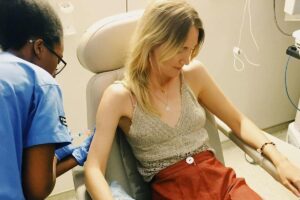In a startling revelation, a recent study has brought to light the widespread yet often undiagnosed condition of non-alcoholic fatty liver disease (NAFLD), affecting nearly a third of adults globally. According to research published in The Lancet Regional Health Europe, approximately 20 million individuals across the United States, United Kingdom, Germany, and France suffer from this ‘silent’ disease, with a staggering 75% unaware of their condition.
The study highlights that only 2.5 million of these individuals have received a diagnosis, prompting one medical expert to label NAFLD as the “most deadly yet underdiagnosed condition.” This revelation underscores the urgent need for increased awareness and early detection.
Understanding Non-Alcoholic Fatty Liver Disease
Non-alcoholic fatty liver disease, also known as metabolic dysfunction-associated steatotic liver disease (MASLD), occurs when more than five percent of the liver is composed of fat, despite minimal or no alcohol consumption. This condition is distinct from alcohol-related fatty liver disease, which is directly linked to excessive alcohol intake.
The progression of NAFLD begins with ‘simple fatty liver,’ characterized by fat accumulation in liver cells. The more severe form, known as ‘metabolic dysfunction-associated steatohepatitis (MASH),’ involves liver inflammation due to fat build-up, potentially leading to cirrhosis and liver cancer.
Symptoms and Risk Factors
One of the most insidious aspects of NAFLD is its often asymptomatic nature. However, some individuals may experience fatigue, general malaise, or discomfort in the upper right abdomen. As the disease progresses to MASH, symptoms can include itchy skin, abdominal swelling, shortness of breath, and jaundice.
According to the NHS, risk factors for NAFLD include obesity, type 2 diabetes, insulin resistance conditions like polycystic ovary syndrome, high blood pressure, high cholesterol, metabolic syndrome, age over 50, and smoking.
Diagnosis and Treatment
NAFLD is frequently discovered during routine medical tests, with imaging techniques used to confirm the diagnosis. Dr. Chris Boettcher, a prominent voice on social media platform X, emphasizes that NAFLD can be reversed, primarily through weight loss. The Mayo Clinic supports this, recommending a weight loss of 10% or more of body weight, although even a 3-5% reduction can yield significant benefits.
“The most deadly yet underdiagnosed condition by doctors: Non-Alcoholic Fatty Liver Disease. 1 in 3 adults have it and it silently leads to cancer, diabetes, and early death. Just losing 7-10% of your bodyweight reverses non-alcoholic fatty liver disease in up to 90% of people. It directly: Burns liver fat, lowers inflammation, reduces insulin resistance.” – Dr. Chris Boettcher
Implications and Future Directions
The revelation of NAFLD’s prevalence and underdiagnosis has significant implications for public health. As awareness grows, healthcare systems may need to adapt by implementing more comprehensive screening processes and public health campaigns to educate populations about lifestyle changes that can mitigate risk.
Historically, the medical community has faced challenges with underdiagnosed conditions, such as hypertension and diabetes, which also present few symptoms until advanced stages. The silent nature of NAFLD parallels these conditions, highlighting the need for proactive healthcare strategies.
Moving forward, experts advocate for increased research funding to better understand NAFLD’s pathophysiology and develop targeted therapies. As the global population ages and obesity rates rise, addressing NAFLD becomes increasingly urgent to prevent a potential healthcare crisis.
In conclusion, as awareness of non-alcoholic fatty liver disease grows, so too does the opportunity to combat its silent threat. Through early detection, lifestyle modifications, and medical intervention, many of the adverse outcomes associated with this condition can be prevented, offering hope to millions of individuals worldwide.






